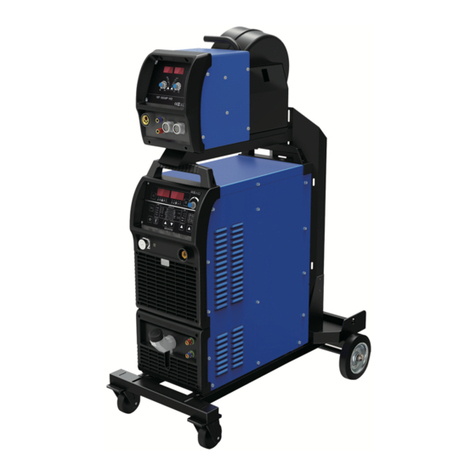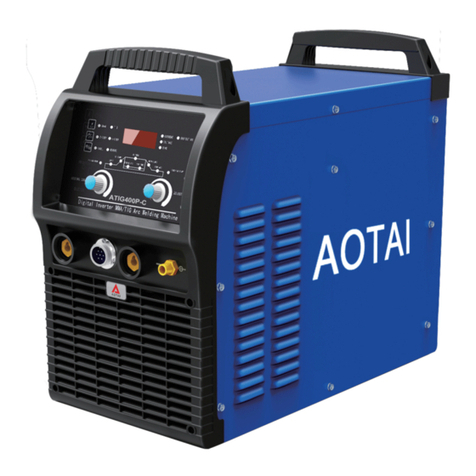If electromagnetic interference still occurs, despite the fact that the mains connection in accordance with the
regulations, take additional measures
- Welding cables
Keep these as short as possible.
Connect the work cable to the work piece as close as possible to the area being welded.
Lay them well away from other cables.
Do not place your body between your electrode and work cables.
- Equipotential bonding
- Workpiece grounding (earthing)
- Shielding
Shield the entire welding equipment and other equipment nearby.
ARC rays can burn.
Wear an approved welding helmet or suitable clothing made from durable flame-resistant material (leather, heavy
cotton, or wool) to protect your eyes and skin from arc rays and sparks when welding or watching.
Use protective screens or barriers to protect other nearby personnel with suitable, non-flammable screening and/or
warn them not to watch the arc nor expose themselves to the arc rays or to hot spatter or material.
Visible and invisible rays can burn eyes and skin.
Fumes and gases can be dangerous.
can be hazardous to your health.
When welding, keep your head out of the fume. If inside, ventilate the area at the arc to keep fumes and gases
away from the breathing zone. If ventilation is not good, wear an approved air-supplied respirator.
Work in a confined space only if it is well ventilated, or while wearing an air-supplied respirator.
Welding fumes and gases can displace air and lower the oxygen level causing injury or death. Always use enough
ventilation, especially in confined areas, to insure breathing air is safe.
Welding may produce fumes and gases, breathing these fumes and gases
Welding and cutting sparks can cause fire or explosion.
touching the work or ground. Accidental contact can cause sparks, explosion, overheating, or fire. Make sure the
area is safe before doing any welding.
Welding and cutting on closed containers, such as tanks, drums, or containers, can cause them to blow up. Make
sure proper steps have been taken.
When pressure gas is used at the work site, special precautions are required to prevent hazardous situations.
Connect work cable to the work as close to the welding zone as practical to prevent welding current from passing
too long and creating fire hazards or overheat.
Wear oil-free protective garments such as leather gloves, heavy shirt, cuffless trousers, high shoes, and a cap.
Wear ear plugs when welding out of position or in confined places. Always wear safety glasses with side shields
when in a welding area.
Be attention that welding sparks and hot materials from welding can easily go through small cracks and openings to
adjacent areas and start a fire. Remove fire hazardous from the welding area, if not possible, cover them thoroughly.
Do not weld where flying sparks can strike flammable material and where the atmosphere may contain flammable
dust, gas, or liquid vapors (such as gasoline).
Protect yourself and others from flying sparks and hot metal. Remove any combustibles from operator before
perform any welding.
Keep a fire extinguisher readily available.
Empty containers, tanks, drums, or pipes which have combustibles before perform welding.
Remove stick electrode from electrode holder or cut off welding wire at contact tip when not in use.
Apply correct fuses or circuit breakers. Do not oversize or bypass them.
When not welding, make sure the electrode circuit is not
3






























